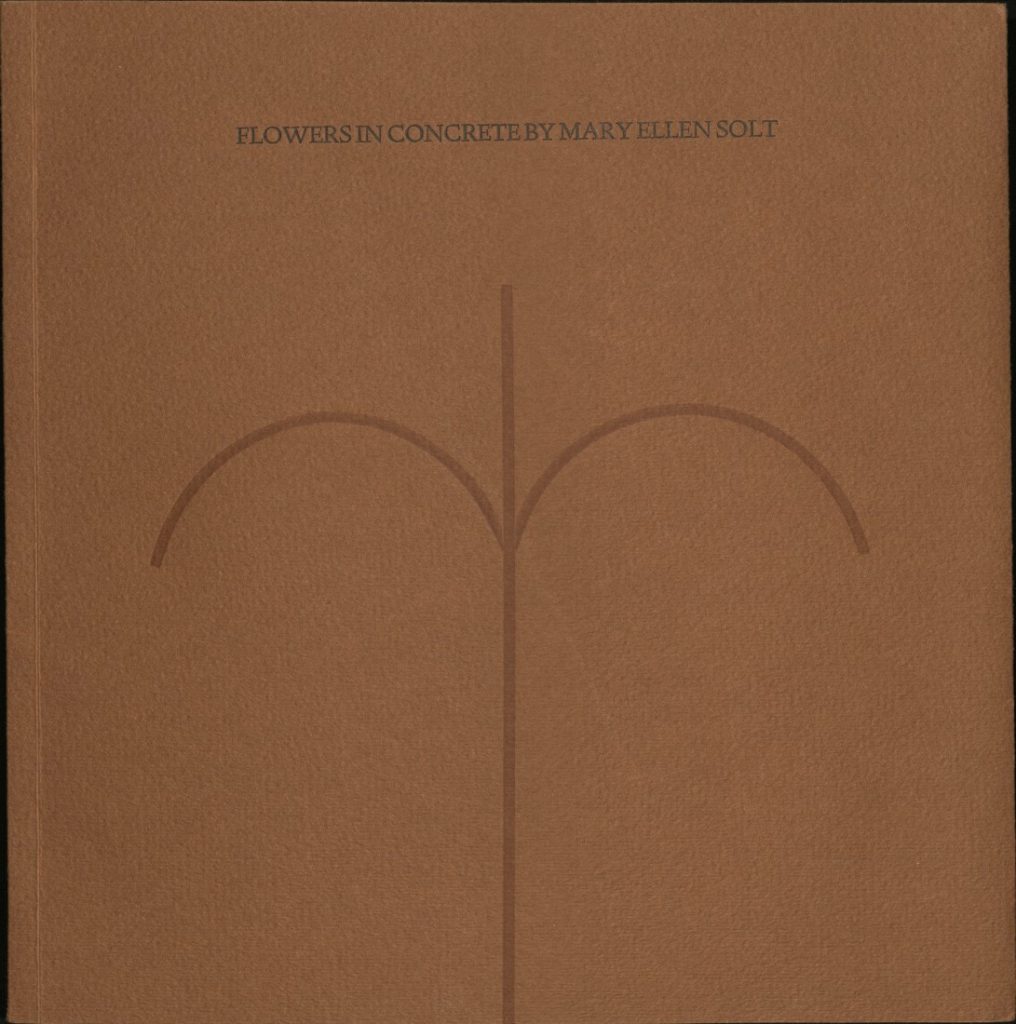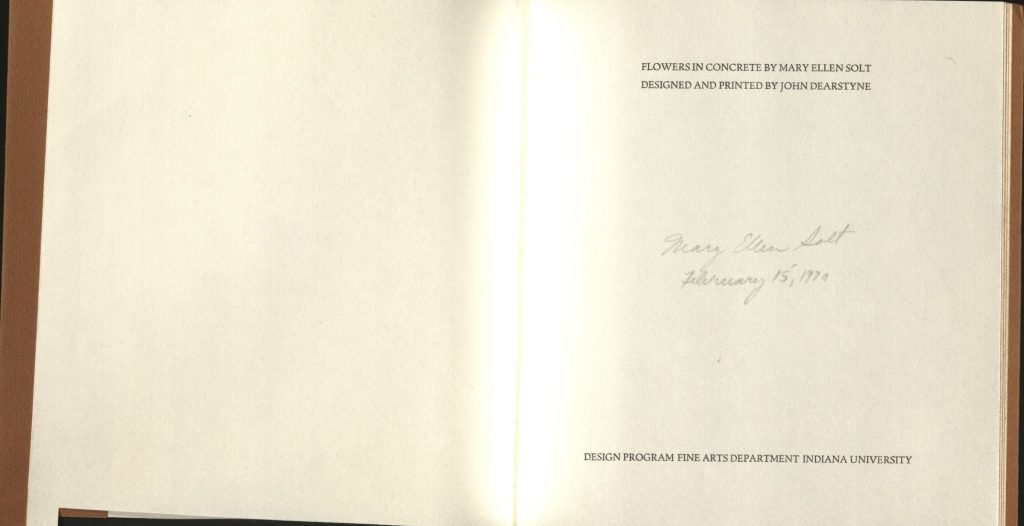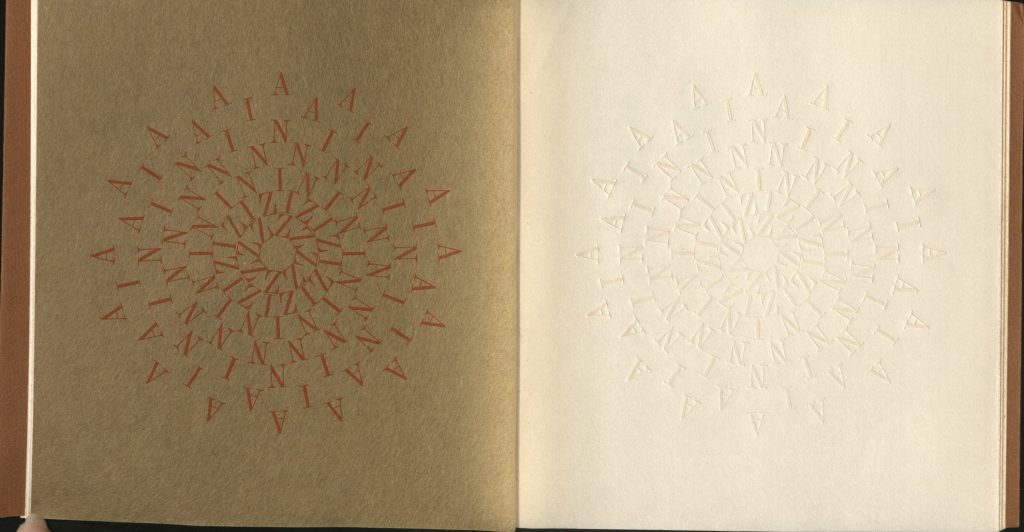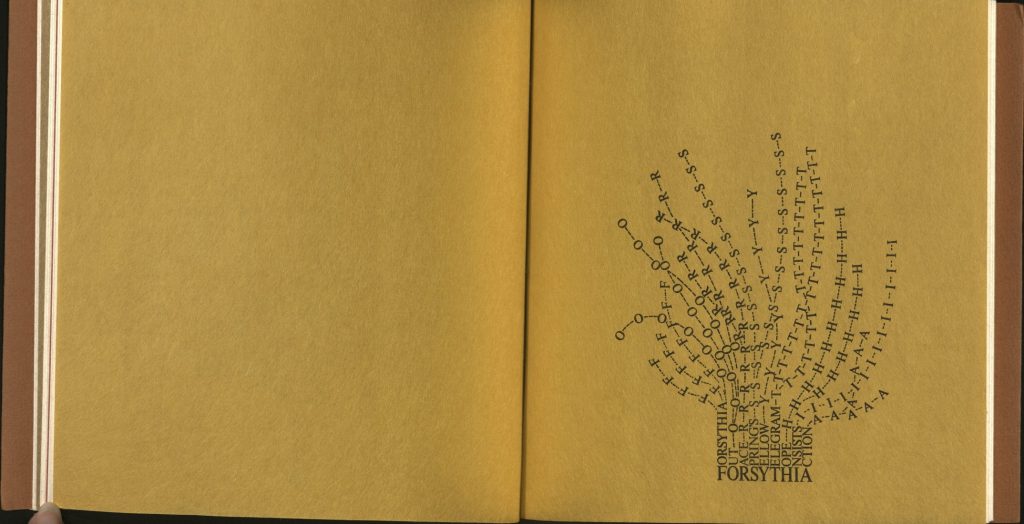That’s Distinctive!: Concrete Poetry
Check the blog each Friday for a new “That’s Distinctive!” post. I created the series because I genuinely believe there is something in our collections for everyone, whether you’re writing a paper or just want to have a look. “That’s Distinctive!” will provide a more lighthearted glimpse into the diverse and unique materials at Spencer – including items that many people may not realize the library holds. If you have suggested topics for a future item feature or questions about the collections, feel free to leave a comment at the bottom of this page.
This week on That’s Distinctive! I am sharing a book from Special Collections. The book, titled Flowers in Concrete, was written by Mary Ellen Solt and published in 1966. According to the Poetry Foundation, “Solt began writing concrete poetry in the 1960s and became a leader of the concrete poetry movement.” A post on the Getty’s Iris blog describes concrete poetry as a form of poetry where the poems are “composed of words, letters, colors, and typefaces, in which graphic space plays a central role in both design and meaning.” The Poets.org website describes concrete poetry as more than just poems; they are pieces of visual art. Concrete poems are meant to be viewed rather than read aloud.
While there is more to be seen than said when it comes to concrete poetry, I chose to highlight this item because I had never heard of a concrete poem before. Often, then one thinks of a poem, they think of the typical lines that tend to rhyme and tell a story. Concrete poems still tell a story but in a different way. I came across this book when Special Collections Curator Elspeth Healey was using it for a class. She took a moment to show the book to me and some students since we were intrigued. The book the library houses is copy 60 out of 100 printed. Solt signed and dated the title page of Spencer’s copy in February 1970. The library also holds a later limited-edition poster-sized portfolio version of Flowers in Concrete printed by lithography in 1969 (Call Number: R72). Below I am sharing just three examples of concrete poems from the book (zinnia, forsythia, and dogwood). The Poetry4Kids website has a great lesson on how to write a concrete poem.
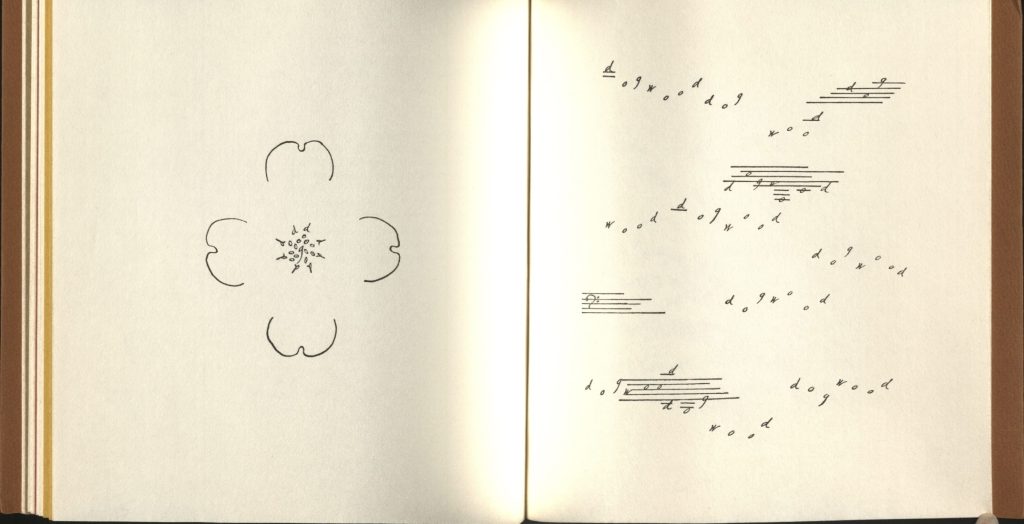
Tiffany McIntosh
Public Services
Tags: concrete poetry, Mary Ellen Solt, Poetry, Special Collections, That's Distinctive, Tiffany McIntosh

